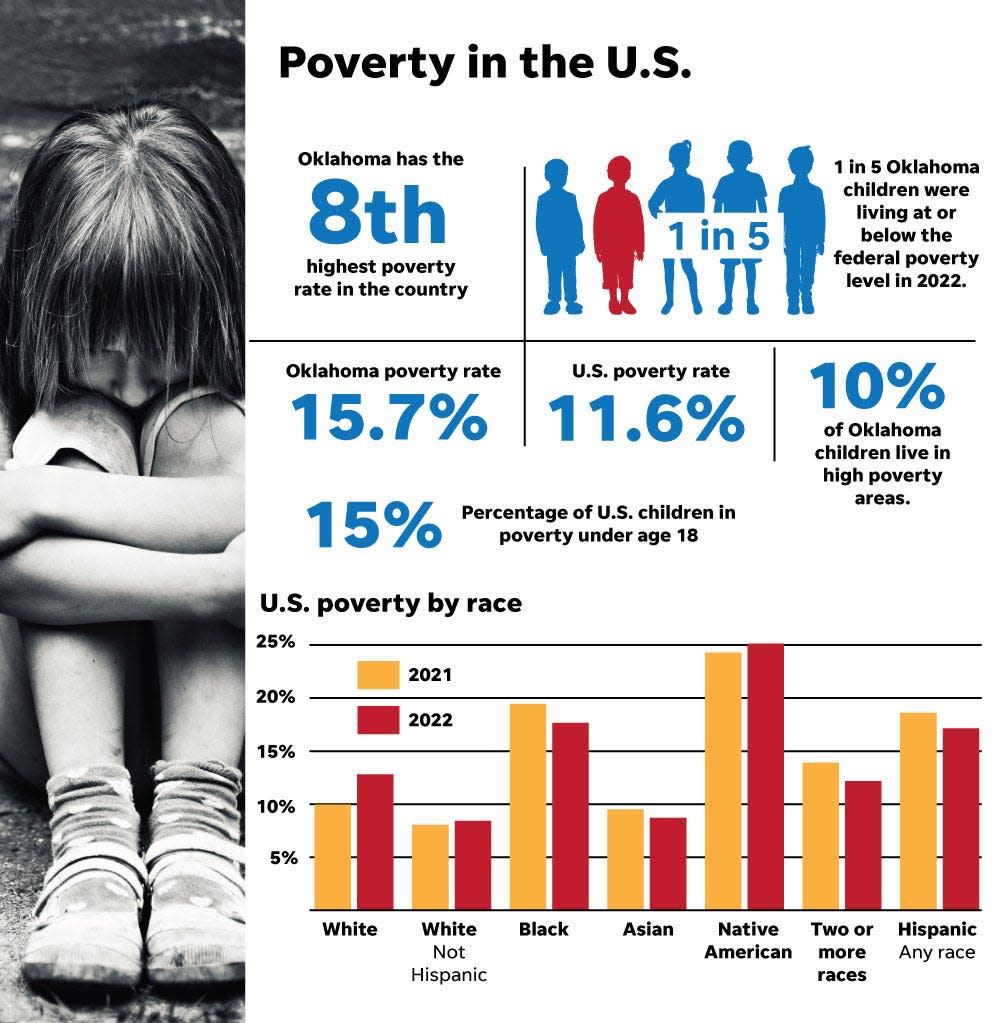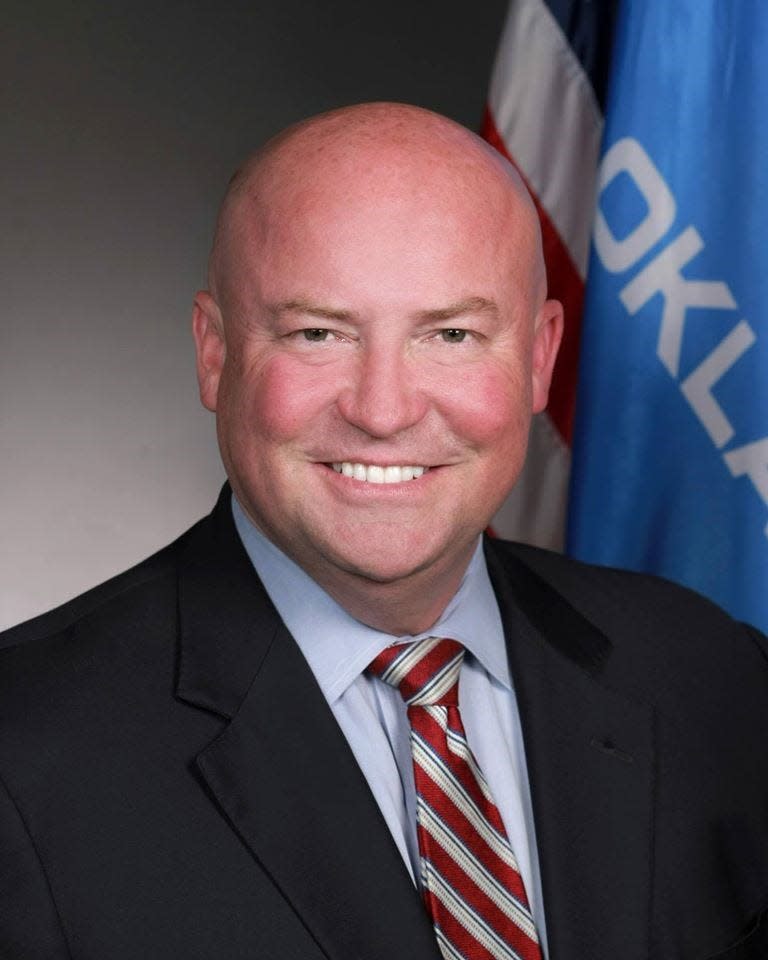Guest: Poverty is a foe that can undermine children’s growth, lifelong well-being

Two recent studies show Oklahomans are struggling with poverty levels above the national average. A report released this month by the U.S. Census Bureau validated another report released earlier this year, the Kids Count Data Report, issued by the Annie E. Casey Foundation.
In each, the data show that Oklahoma’s children live at or below the federal poverty level at a rate of more than one-in-five. Let’s look at how debilitating that amount truly is; for 2023, a family of two (single parent and child) is at the poverty level with $19,720 in annual earnings. For a family of four (two parents and two children) the level is $30,000 per year. I challenge anyone to try to survive on those amounts, much less thrive.
Kids Count data, based upon information collected from the U.S. Census and data from state agencies across the nation, show that the child poverty level increased from 20% in 2019 to 21% in 2021. The same measurements nationwide were at 17% for both years surveyed.
In actual numbers, the number of children in poverty in the United States is estimated to be 12,243,000, while the number of Oklahoma children living at or below this level is estimated to be 199,000.
The U.S. Census Bureau annually publishes poverty estimates that measure the economic well-being of households, families and individuals in the United States. This report provides estimated measures of poverty through the Supplemental Poverty Measure (SPM).
In 2022, the overall national SPM rate was 12.4 percent. This was 4.6 percentage points higher than the 2021 SPM rate of 7.8 percent, and 0.6 percentage points higher than 2019, the year before the COVID-19 pandemic. This was the first significant increase in the SPM rate since 2010, according to the report.
At every educational level, the SPM rate for individuals increased, from those without a high school diploma to those with a college education. The evidence that education is valuable is this fact: In 2022, SPM rates for those with less than a high school diploma (27.9 percent) were approximately five times greater than those with a bachelor’s degree or higher (5.8 percent).
Poverty is a foe that can undermine children’s growth, including children’s health, nutrition and prospects for success in school and beyond. The negative effects of poverty on kids can echo throughout their lives, as they are more likely to contend with issues such as teen pregnancy and failing to graduate from high school. Children of families in poverty are far more likely to remain impoverished in their adulthood as poverty is all-to-often a self-replicating malady.
The website World Population Review ranks Oklahoma as the 11th worst state for high school graduation rates, coming in at 88.6% of students earning a diploma. The CDC has Oklahoma as the fourth worst state for teen pregnancy rates at 24.1 per 1,000 females aged 11-19.
As our Legislature returns for a special session called by the governor, I would encourage legislative members to consider this data and look to ways to improve conditions for Oklahoma families, and especially for children who are enduring poverty. Workforce development and child care assistance are often discussed, but as the data shows, these two areas are critical for economic success.
Keeping kids in school, providing affordable child care and increasing workforce training through high school diplomas, CareerTech certifications and college degrees will provide greater economic opportunities and reduce these poverty levels shown in these reports.
In short, lawmakers’ focus should be on those who are struggling with poverty issues if we expect better opportunities for future generations.

Joe Dorman is executive director of the Oklahoma Institute for Child Advocacy.
This article originally appeared on Oklahoman: Oklahoma lawmakers should focus on kids struggling with poverty

